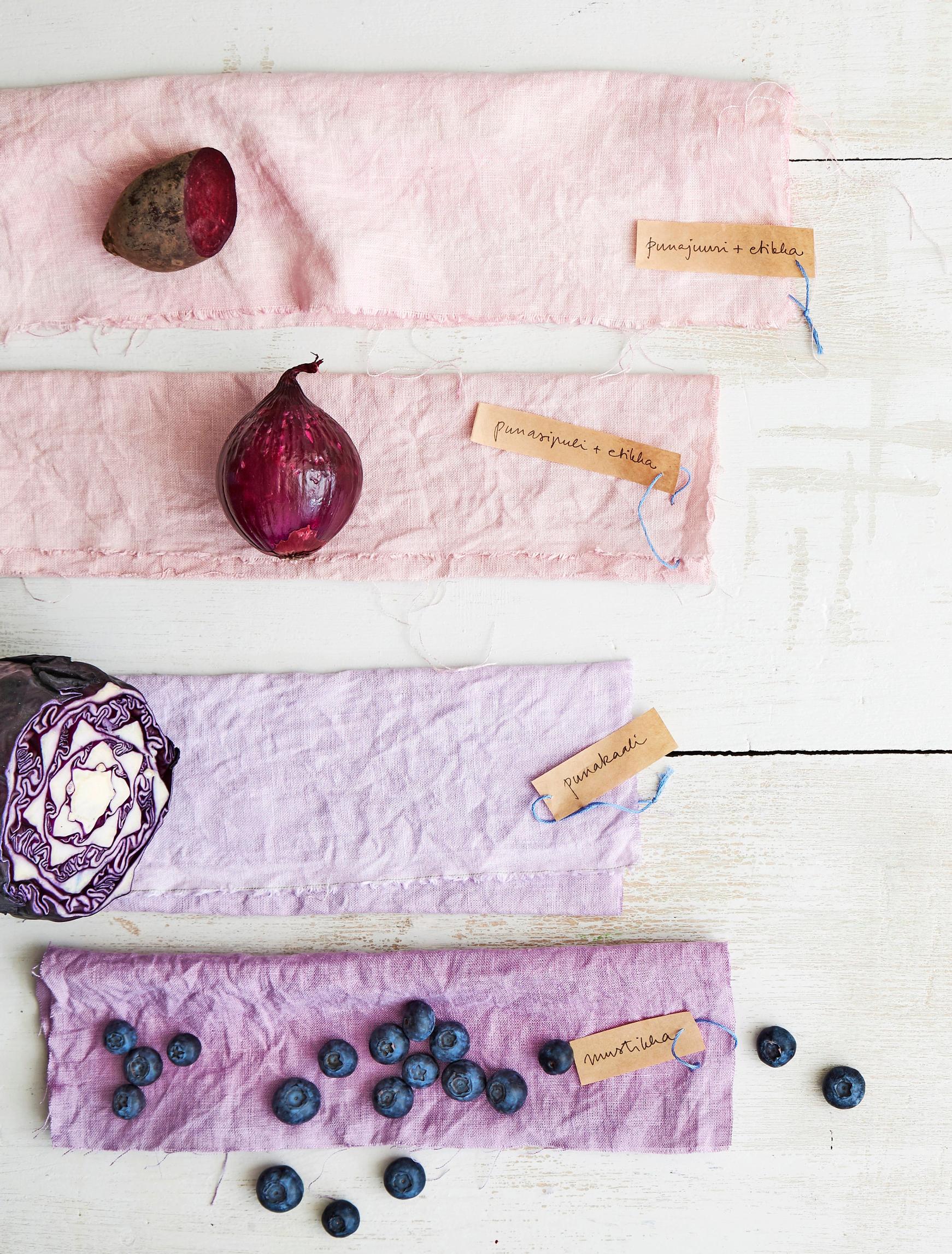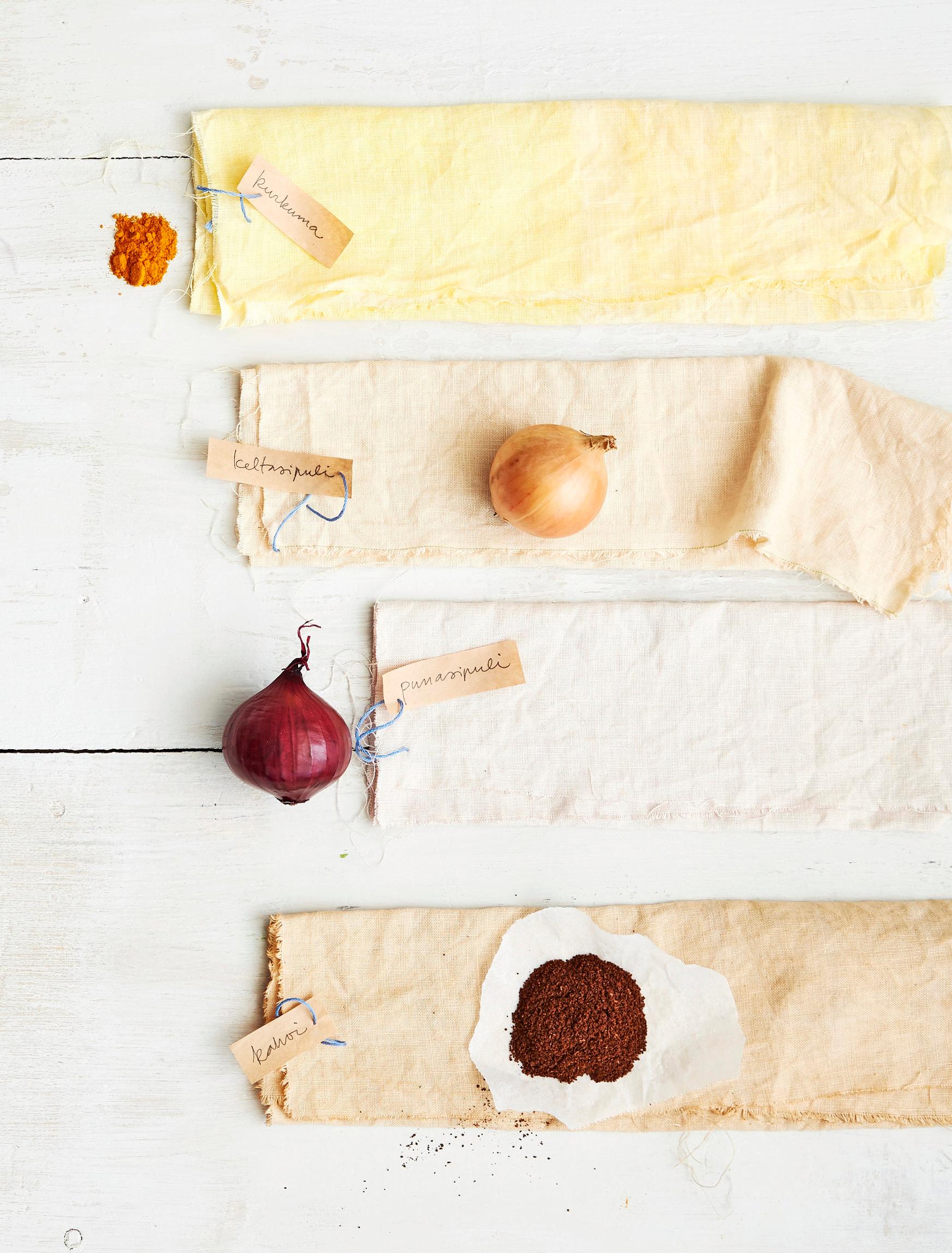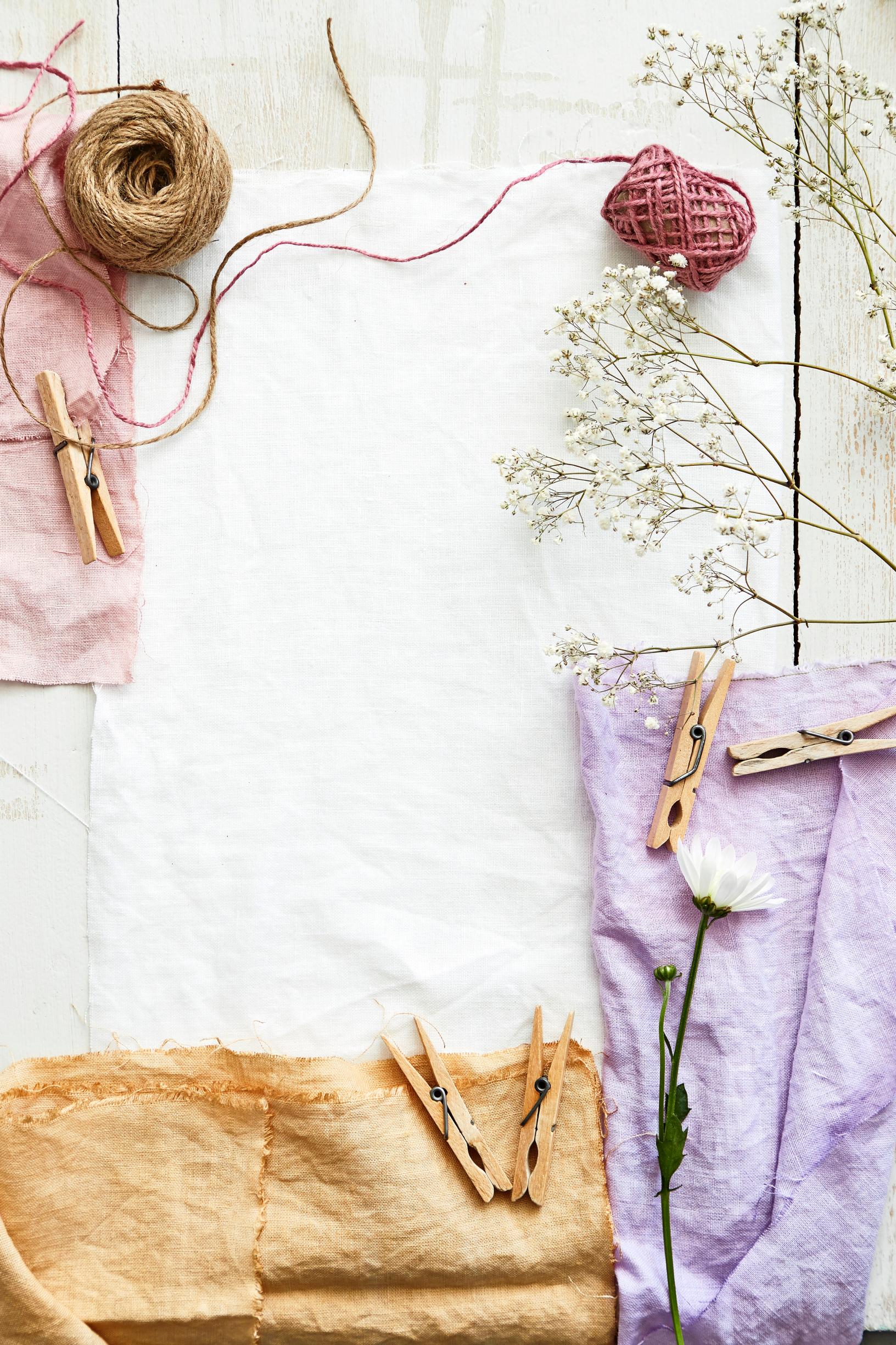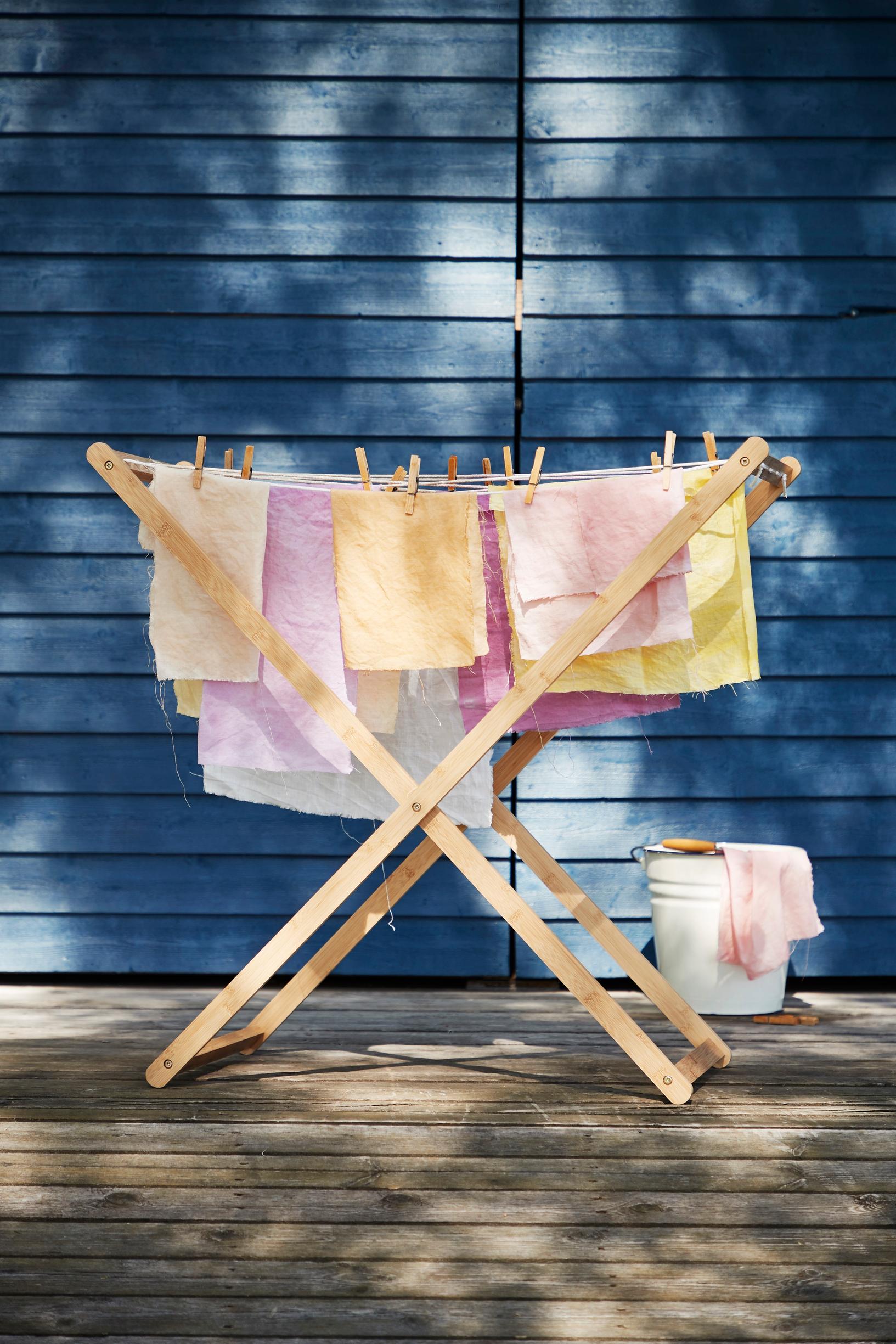
Nature’s color palette
Dye your textiles with coffee, turmeric, and beetroot: these natural dyes for fabric come from your kitchen!
Simmering fabric in a dye pot is a fun weekend project. You can easily dye fabric using plant-based colors found right in your home kitchen.
When dyeing fabric with vegetables, the result is always a bit unpredictable. Keep the following in mind:
- We used linen for this article, but wool, silk, or cotton each reacts differently. Note: silk and wool do not tolerate very hot water.
- It took 30–60 minutes to prepare the dye bath. If you simmer the vegetables longer, the bath becomes stronger.
- We left the sample swatches in the bath for 20–60 minutes. Check the color from time to time. The more fabric you dye, the more dye bath you need.
- Additives like vinegar can affect the final color. You can increase color durability and depth by using mordants such as alum, which is available at the pharmacy with usage instructions.


Onion skins are perfect for beginners. They make it easy to experiment with different depths of color.




Natural dyes for fabric—instructions:
- Pre-wash the fabric you plan to dye. If you’re just experimenting, cut the fabric into pieces about 30 x 50 centimeters (12 x 20 inches).
- For your test swatches, boil about half a liter (2 cups) of water and add a dye plant, such as yellow onion skins. Let it simmer for about an hour.Note! If you’re dyeing large pieces of fabric, you’ll need at least a 10-liter (2.6 gallons) pot.
- When the bath is dark enough, remove the pot from the heat, strain out the vegetables, and add the fabric to the 80–90 °C (176–194 °F) solution. Make sure to fully submerge the fabric and move it around for even coloring. If you like, add a mordant during the final 15 minutes.
- When you’re finished dyeing, rinse the fabric with cool water and hang it up to dry. If you dry outdoors, avoid direct sunlight because it fades the color.


Most recent
Latest


